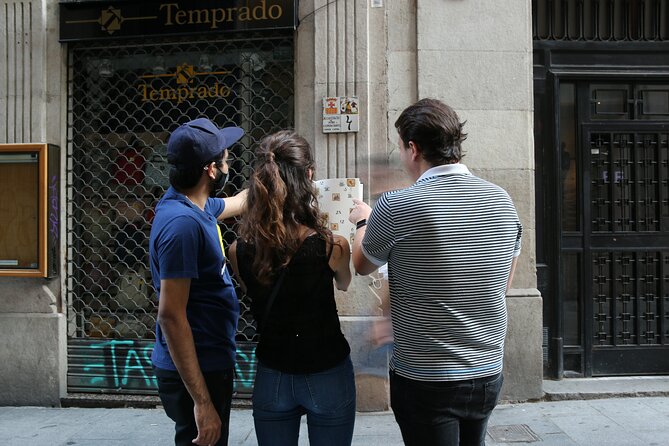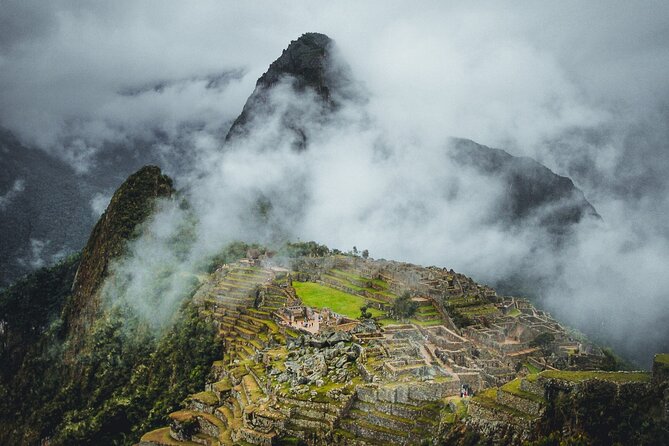What Is The Moon Made Of?
Have you ever looked up at the night sky, filled with dreamy stars and watched our nearest celestial neighbor, the Moon? It’s been around since time immemorial, glowing in its silver light as it waxes and wanes through its phases. But what is the Moon made of exactly? We’ve longed to answer this question for centuries – from ancient astronomers to modern-day scientists. Now, we can finally unveil some of the mysteries surrounding our closest celestial neighbor by exploring what is the Moon made of.
Composition of the Moon
A Mixture of Minerals and Rocks
The moon is a unique body in our Solar System, containing an array of minerals and rocks. The lunar surface consists primarily of the mineral plagioclase feldspar, which makes up its solid crust. Beneath this hard layer lies a mantle comprised mostly of pyroxene and olivine. Iron-rich materials are also present such as iron oxide and ilmenite, giving it its distinct grey coloration when viewed from Earth.
Volcanic Activity
Geologists believe that much of the moon’s composition was formed by volcanic activity during its early stages of development 4 billion years ago. This initial formation process produced many layers within the lunar interior including those made up primarily of sulfur dioxide gas or molten magma composed mainly of silicon dioxide. As the moon cooled off over time, these elements combined to form larger chunks called breccias which can be seen on the surface today as craters or mountains.
Water Ice
Recent studies have discovered small pockets of water ice below some sections on the moon’s surface near areas known as ‘cold traps’ where temperatures remain consistently low due to their distance from direct sunlight exposure. Scientists suspect that this water could have been deposited there by comets colliding with it billions years ago but further research is still needed before any definite conclusions can be drawn about its origin or purpose for being there in the first place!
Geological Features of the Moon
The moon is one of the most fascinating astronomical features, and its geological features are no less remarkable. To begin with, there are two distinct geologic regions on the moon: highlands and maria. The highlands make up roughly 80% of the surface area and are made up primarily of anorthosite rock which is composed mostly of calcium-rich plagioclase feldspar. This region has a rugged topography due to impact cratering over billions of years.
In contrast, the low-lying maria cover 17% of the surface area and consist largely of basaltic lava flows that filled in some craters created by impacts from asteroids and comets during early solar system formation. These ancient volcanoes have since cooled leaving behind mare plains or “seas” as they were once thought to be called when seen through binoculars or telescopes from Earth. In addition, these areas contain numerous wrinkle ridges caused by contractional tectonic forces that formed after cooling was complete as well as rilles which are sinuous channels believed to have been forged by flowing lava molten rocks sometime over 3 billion years ago.
Finally, another feature found on both regions is known simply as regolith – a mix of unconsolidated dust particles and rocky debris created mainly by meteoroid impacts at various times throughout history resulting in a layer five feet thick in lunar highland areas and almost twice that thickness in some parts near Mare Tranquillitatis (the Sea Of Tranquility). Regolith acts much like soil does on earth providing nutrients for plants but also provides protection against radiation for astronauts exploring our nearest neighbor in space making it an important factor not just scientifically but also for future human exploration plans involving this celestial body orbiting us here on planet Earth!
Chemical Composition of the Moon’s Surface
The moon is a mysterious object that appears in our night sky, and its surface has been studied by scientists for centuries. Its chemical composition may be one of the most important aspects to understanding what it’s made of, as well as how it affects us here on Earth.
Main Elements
- The main elements found on the surface of the Moon are silicon dioxide (SiO2), aluminum oxide (Al2O3), calcium oxide (CaO), iron oxide (FeO) and magnesium oxide (MgO). These five elements make up almost 95% of all material present on the lunar surface.
These components form a layer called regolith, which is composed primarily of dust grains ranging in size from micrometers to millimeters embedded in glassy particles created by meteoroid impacts over millions of years. This layer helps protect delicate equipment placed on or near the surface from harsh conditions such as radiation and temperature changes due to day-night cycles.
Minor Elements
- Along With these major components, minor amounts of other elements can also be found on the Moon’s surface. They include carbon dioxide (CO2), sulfur dioxide (SO2) and nitrogen oxides (NOx).
Trace amounts of hydrogen and oxygen have also been detected at very low levels in some areas, indicating potential sources for water molecules that could exist beneath certain locations on the lunar surface. This discovery could lead to future exploration opportunities for humans looking to find new resources beyond Earth’s atmosphere.
Finally, organic compounds have recently been discovered within samples taken from different sites around the moon’s equator region during recent missions like those conducted by NASA’s Lunar Reconnaissance Orbiter spacecraft.
- Organic compounds contain both hydrogen and carbon atoms bound together into molecules.
.This suggests that there may be a significant amount more materials yet undiscovered beneath its rocky exterior waiting to be explored further down into its depths in search for answers about our universe beyond what we currently know now!
Mineralogy of the Moon’s Interior
The Moon is a unique and fascinating celestial body, the only one of its kind that has been explored in depth by human beings. Its mineralogy – or the study of minerals found within it – offers us an insight into its mysterious past. After all, what lies beneath the lunar surface has remained hidden from Earth-bound eyes for thousands of years.
The Moon’s interior consists mainly of silicate rocks and metals such as iron and magnesium, along with a small amount of water vapor. The most common rock type on the Moon’s surface is basaltic anorthosite, which forms large plains called maria (dark regions) when molten lava solidifies after volcanic eruptions. This dark material covers up to 30% of the moon’s total area.
Along With these primary components, there are also trace amounts of other elements such as titanium oxide (TiO2), aluminum oxide (Al2O3), potassium oxide (K2O) and silicon dioxide (SiO2). These materials are responsible for creating some interesting features on the lunar landscape like craters, mountains and valleys. In fact, recent studies have revealed that much of this ‘soil’ contains minute traces of organic molecules – evidence that life may have once existed on our nearest neighbor!
- Key points:
- The mineralogy within the moon provides insight into its history.
- It is composed primarily silicate rocks & metals like iron & magnesium
- “Soil” contains trace amountsof organic molecules – evidence for possible ancient life.
.
Role of Volatiles on the Lunar Surface
Volatiles are gases or liquids that have a low boiling point, making them easily evaporate. They are an important part of lunar geology as they can be used to form new minerals and interact with existing ones in various ways.
A major role of volatiles on the lunar surface is in dust formation. Volatile compounds such as water vapor, carbon dioxide, and ammonia can react with solid materials like silicate dust grains on the moon’s surface. These reactions cause changes in their physical properties – for example, by changing grain size or increasing porosity – which affect their ability to remain suspended in the atmosphere and be transported across long distances. This process helps shape the distribution of dust particles around our solar system.
The presence of volatiles also affects how much sunlight is reflected from different parts of the moon. The amount and type(s) of volatile molecules present will alter how much light is absorbed or scattered back into space. For instance, if there are high levels of water vapor near a region on the moon’s surface then more light would be absorbed than if it were dryer; this could result in differences between day-night temperature patterns observed at different locations along its orbit around Earth.
Along With influencing atmospheric conditions, volatiles play roles within planetary interiors. As certain elements move through magma chambers deep below the lunar surface they interact with both liquid and gaseous components – including volatile molecules – forming new mineral deposits over time which eventually cool down into rock formations seen on our planet today (i.e., igneous rocks). This process plays a key role in shaping plate tectonics here on Earth but has yet to be studied extensively enough for us understand its full implications when applied specifically to other planets like Mars or Venus!
Implications for Habitability around the Moon
The Potential for Human Habitation
When considering the possibility of habitability around the Moon, there are several factors which need to be taken into account. The most obvious is whether or not it would be physically possible for human beings to live in such an environment. Given that conditions on the surface of the moon are extremely hostile, with temperatures ranging from -260°F during night time and +260°F during day time, this suggests that any form of human habitation would require a great degree of technological advancement and engineering prowess. Plus, living in such extreme conditions presents a number of health risks as radiation levels vary drastically depending upon location and lunar cycle; while also requiring advanced shielding systems to protect against solar wind storms.
The Practicality Of Colonizing The Moon
Another consideration when discussing potential habitability around the moon is whether or not it would be practical – both economically and politically – to attempt colonization on its surface. With regard to economics, establishing a permanent presence on another celestial body requires significant investments in terms of resources and infrastructure; something which may prove too costly for many nations or organizations due to their financial constraints. Politically speaking, there could also be numerous issues associated with attempting colonization on another world given that international law does not currently recognize ownership rights over any part of outer space making any claim difficult at best (or potentially impossible).
Exploring Other Options
Finally, other options should also be explored when considering potential habitability around the moon. For example, constructing orbiting habitats might provide an ideal solution since they can remain relatively close to Earth yet still benefit from certain environments found only in space (such as reduced gravity). Furthermore they offer increased safety compared with building facilities directly onto the lunar surface while providing an opportunity for experimentation without running afoul existing regulations regarding extra-terrestrial claims by individual nations or organizations.. Such habitats may eventually become homes away from home for astronauts who wish explore further out into our Solar System without leaving behind all comforts provided by life here on Earth
Human Exploration and Scientific Discoveries about the Moon
In the last fifty years, humans have made incredible strides in their exploration and scientific discoveries about the Moon. From early robotic probes to human landings on its surface, our understanding of this mysterious celestial body has grown exponentially.
One of the major accomplishments for lunar science was the Apollo 11 mission in 1969 when Neil Armstrong and Edwin “Buzz” Aldrin became first people to ever set foot on its dusty landscape. This momentous occasion not only marked a giant leap forward for humanity but also allowed scientists to get an up-close look at what they had previously only seen through telescopes from Earth. Astronauts brought back with them samples of Lunar soil that were then studied by geologists here on Earth who found it contained evidence indicating volcanic activity in the Moon’s past as well as minerals like titanium which is not normally found in terrestrial rocks.
The Apollo program also provided us with some of our most famous photographs including “Earthrise”, taken by William Anders during the Apollo 8 mission, that showed a stunning view of planet Earth rising over the horizon line of another world for the very first time – something many believed would never be achieved within their lifetimes yet alone just one decade after Yuri Gagarin’s historic flight into space! After Armstrong and Aldrin left footprints behind them on this alien terrain, future missions were sent out equipped with more sophisticated devices such as seismometers and lasers that could measure gravitational forces between both worlds or record how much moonquakes caused minor shifts in elevation across its surface. These new instruments gave us invaluable insight into how much seismic activity there is inside our closest neighbour while also helping us understand why certain areas seem unusually smooth compared to others – something we hadn’t been able to appreciate before visiting it ourselves!
Thanks largely due to all these amazing advancements made over recent decades our knowledge base regarding The Moon has expanded immeasurably; teaching us things we’d never have known otherwise – such as where water ice might exist beneath its rugged exterior – so humanity can continue pushing boundaries even further than those brave astronauts did 50 years ago!





